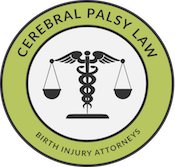What is Conductive Education?
Conductive education (also known as CE) is a system of teaching and learning that aims to help those with neurological and motor disorders participate and function more fully in society. Conductive education aims to prevent disabled people from acquiring learned helplessness by promoting intensive movement exercises, encouraging students to identify and achieve realistic goals, and discouraging the use of walkers, splints, and wheelchairs in the classroom. Throughout this page, our Michigan cerebral palsy and birth injury attorneys will discuss conductive education and explain how it may help individuals with cerebral palsy regain function, achieve therapeutic goals, and live with more equal access and opportunity.
If you believe your loved one’s cerebral palsy or birth injury diagnosis was the result of medical malpractice, contact our expert birth injury attorneys today for a free legal consultation. If medical malpractice caused your loved one’s injuries, you could be eligible for the funds and resources necessary to afford important health care and lifestyle resources. Our legal team is available to speak with you 24/7. Contact Michigan Cerebral Palsy Attorneys in any of the following ways:
Live Chat with a representative by pressing the tab to the left of your browser
Call us toll-free at (888) 592-1857
Fill out our online contact form here
Conductive Education and Cerebral Palsy (CP)
Conductive education in a particularly fitting form of therapy for children with cerebral palsy because it mixes physical therapy with special education. The program focuses on the child’s specific personality and lifestyle, urges independence and strengthened self-confidence, and incorporates physical and medical rehabilitation. The conductive education program promotes the idea that problems with motor skills and movement are simply problems with learning.
The five key components of conductive education include:
- Activity and intention: This principle of conductive education rejects the effectiveness of passive exercises and instead argues that the child needs to directly engage in activity to learn and rehabilitate.
- Continuity and consistency: To reinforce a skill, children need to consistently practice the skill in a number of different ways. To achieve this, conductive education programs create learning situations out of any given part of the child’s day.
- The child is a unified whole: Conductive education hinges on the idea that all parts of the child’s development—social, physical, mental, and emotional—are connected.
- Whole personality targeting: Conductive education builds the specific personalities of disabled children gradually as a part of the learning process.
- Interdisciplinary training: Conductive education employs one specifically trained body of professionals to conduct the entire educational and rehabilitative process instead of consulting professionals separately.
What Are the Benefits of Conductive Education?
- Social participation in group activities
- Individual empowerment through holistic development, independence, and personal initiative
- Learning strategies based on the individual’s routine
- Encouragement to deeply and critically explore environments and emotions
- Speech, language, movement, motor control, and physical development
- Promotion of self-sufficiency and personal care
Legal Help for Cerebral Palsy in Michigan
Detroit Birth Injury Attorneys Representing Medical Malpractice Victims
The legal professionals at Michigan Cerebral Palsy work tirelessly to obtain the compensation victims of medical malpractice deserve. With over 50 joint years focusing on birth injury cases, our Detroit, Michigan attorney have the depth of experience and knowledge necessary to win your case. Call Michigan Cerebral Palsy Attorneys toll-free at (888) 592-1857 or fill out our online contact form for a free legal consultation and we will answer your legal questions.
